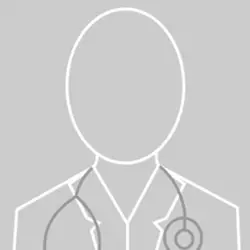Outpatient blood pressure monitoring
"It has been observed that the determination of the evolution of blood pressure during the night gives important information regarding the risk of cardiovascular events".
DR. AGNES DÍAZ DORRONSORO SPECIALIST. CARDIOLOGY DEPARTMENT

What is blood pressure monitoring?
Blood pressure monitoring (BPM) is a test that is intended to measure a patient's blood pressure periodically, outside the medical-hospital setting, over a programmable period of time, usually 24 hours a day.
It is necessary to take into account that in order to maximize the usefulness of the test, it is important to try to reproduce daily life, including taking antihypertensive medication, unless the doctor requesting the test indicates otherwise.
One of the advantages is that information is obtained throughout the day and night, since the night period offers important information regarding the risk of cardiovascular events. Nighttime blood pressure is also important for the evaluation of antihypertensive treatment.

When is blood pressure monitored?
The purpose of this test is to measure a patient's blood pressure, observe its variations and alterations in relation to the different phases and activities of the day. Similarly, it is used to evaluate the usefulness of antihypertensive therapy.
It is especially indicated when an increase in blood pressure induced by the act of the medical visit is suspected. This effect, called the white coat phenomenon, causes discrepancies in blood pressure measured in the office and that obtained outside it.
Diseases in which blood pressure monitoring tests are requested:
- Hypertensive crises.
- Arterial hypertension.
Do you have any of these diseases?
You may need to have your blood pressure monitored
How is blood pressure monitoring performed?
Making of the Blood pressure monitoring (BPM)
The recorder is programmed to inflate the cuff every 20 minutes during the day (from 8 am to 10 pm) and every hour in the evening (from 10 pm to 8 am). It beeps before it starts to inflate. Once the necessary pressure is achieved, it will gradually decrease. It is important that during this phase the arm is kept at rest and in extension, rigid.
It is not necessary to stop your activities, except in this aspect. Therefore, there are activities such as driving, which could be dangerous.
In the event that there is an error in the detection of blood pressure, a repetition of the shot is performed after two minutes.
The recorder has a screen on which you can usually see the time. When the cuff is inflated it shows the pressure of the cuff. At the end of the blood pressure measurement, the blood pressure and heart rate values of the measurement just taken may be displayed on the recorder.
The position of the cuff must be suitable for the sensor to work perfectly, so the practice will indicate how to take care of this and how to replace the cuff if it moves.
Preparation of the Blood pressure monitoring (BPM)
No special preparation is required. The patient is given a cuff on his arm, which he must wear for the entire duration of the test.
It is recommended that you come with clothing that allows you to wear the cuff comfortably on your arm, i.e. with wide sleeves. It is also advisable to wear a belt that day, since it makes it easier to put the recorder on.
Possible risks
In principle it is not a test that presents risks. A minority of patients do not sleep well with the recorder.
On rare occasions patients develop erythema, ecchymosis or superficial phlebitis in the area distal to the placement of the cuff. These lesions are generally mild and self-limiting.
Where do we do it?
IN NAVARRE AND MADRID
The Department of Cardiology
of the Clínica Universidad de Navarra
The Department of Cardiology of the Clinica Universidad de Navarra is a center of reference in different diagnostic techniques and coronary treatments.
We have been the first center in Europe to place a pacemaker by means of a catheterization without the need to open the chest, for cases of severe heart failure.
The Cardiology Department of the Clinic collaborates with the Radiology and Cardiac Surgery Departments to achieve a quick and precise diagnosis of the patient.

Why at the Clinica?
- Specialized Arrhythmia Unit of national reference.
- Unit of Hemodynamics and Interventionist Cardiology equipped with the best technology.
- Cardiac Imaging Unit to achieve the highest diagnostic accuracy.

















